Patient discharge letter template nhs
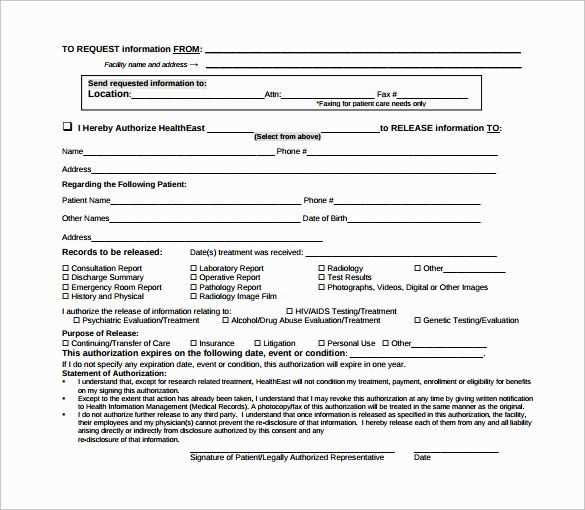
A patient discharge letter should clearly outline the key details regarding a patient’s stay, condition at the time of discharge, and the necessary follow-up care. This template will ensure that healthcare providers include all relevant information in a concise, easy-to-understand format. Below is a sample structure for creating a discharge letter for NHS patients.
Patient Information: Begin the letter by stating the patient’s name, date of birth, and NHS number. This ensures proper identification of the patient and avoids confusion. Include the date of discharge and the attending healthcare provider’s name as well.
Diagnosis and Treatment Summary: Clearly state the diagnosis and outline the treatment or procedures performed during the hospital stay. Be specific about the condition that led to hospitalization and the progress made during the stay. Ensure this section is simple and informative, avoiding medical jargon where possible.
Post-Discharge Instructions: Provide a detailed set of instructions for the patient. This should include prescribed medications, follow-up appointments, and any lifestyle changes or precautions the patient should follow. If there are signs or symptoms to watch for, include them along with a clear action plan should those symptoms occur.
Additional Notes: Add any other relevant details, such as referral information for specialists or contact information for the patient’s primary care provider. This section should offer clarity for the patient or their caregivers, ensuring they know whom to contact for further support.
Patient Discharge Letter Template NHS
Ensure the letter contains clear and concise information about the patient’s care, treatment, and follow-up instructions. Begin by addressing the patient, providing their personal details such as name, date of birth, and hospital ID. Specify the date of discharge and the reason for the admission, followed by a summary of the treatment provided during their stay.
Key Information to Include
List any significant procedures or treatments that were carried out, with relevant dates. Include medication prescribed upon discharge, along with clear instructions on dosage and any potential side effects. Mention any required follow-up appointments, including times, dates, and the contact details for specialists or healthcare providers the patient may need to see.
Additional Instructions
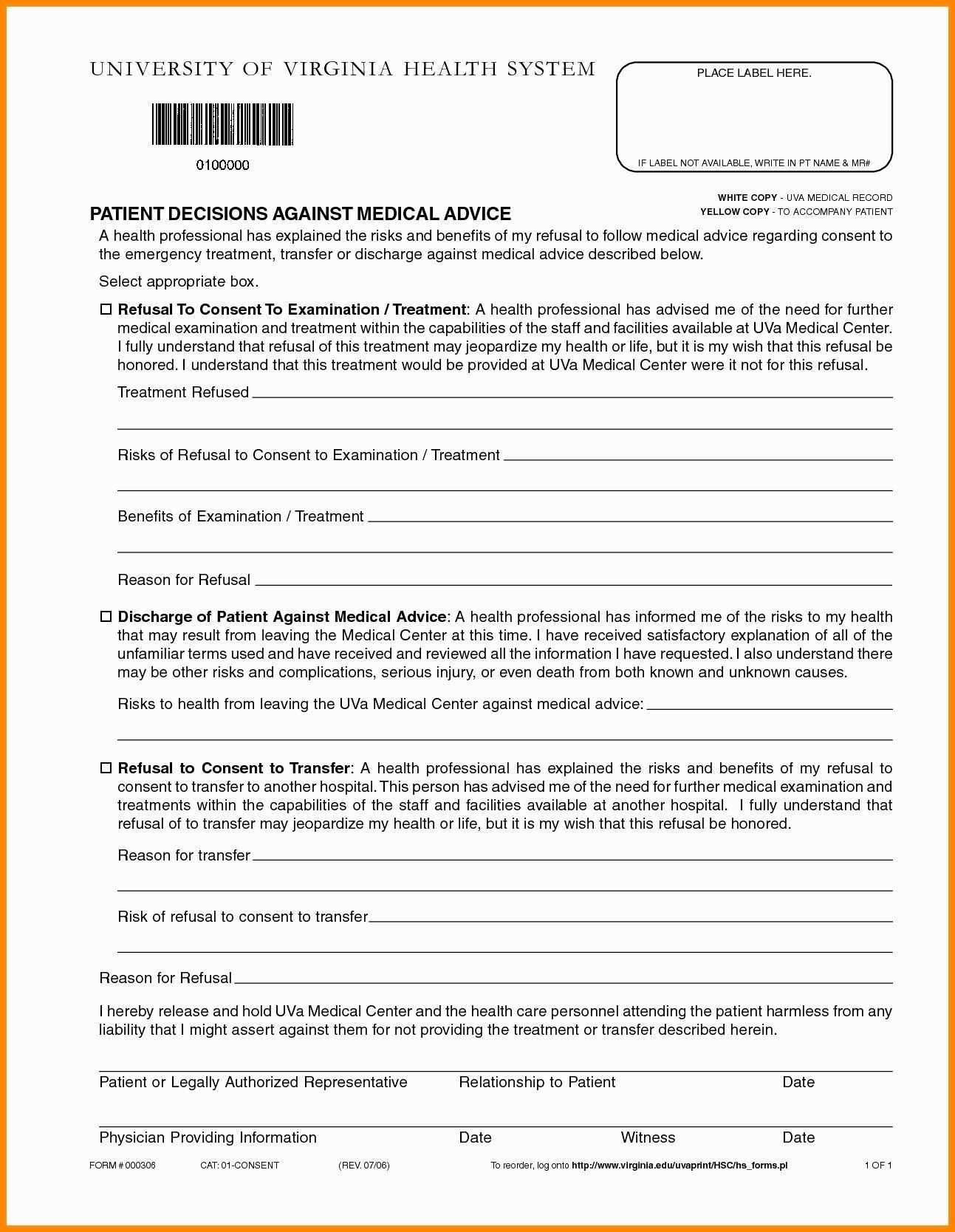
Provide guidance on lifestyle changes, self-care tips, and any restrictions on activities, such as work or exercise. Clarify signs of complications or emergencies that the patient should watch for and seek medical attention if necessary. Finally, ensure the patient understands how to reach the hospital or clinic if they need further assistance or have questions.
Key Elements of a Discharge Letter
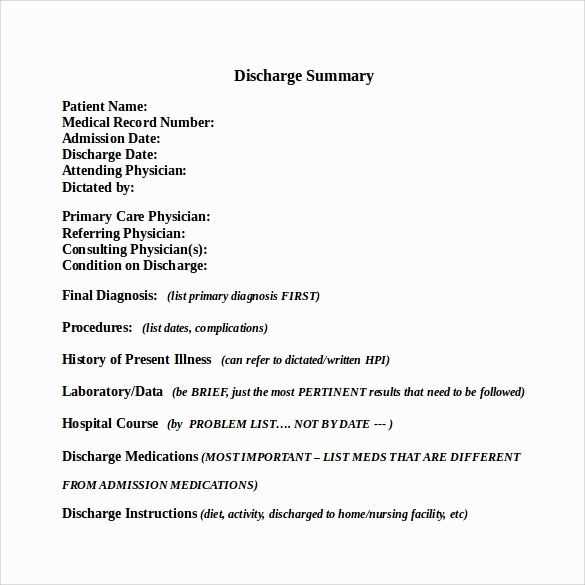
A discharge letter should clearly convey all necessary information for the patient’s follow-up care. Focus on the key points below to ensure clarity and thoroughness:
- Patient Information: Include the patient’s full name, date of birth, and unique identification number to avoid any confusion.
- Reason for Admission: Provide a brief summary of the diagnosis or condition that led to hospitalization.
- Summary of Treatment: Highlight key treatments, procedures, and medications administered during the hospital stay.
- Current Health Status: Mention the patient’s recovery progress, any changes in health, and their readiness to return home.
- Discharge Medications: List any prescribed medications, including dosage instructions, frequency, and potential side effects to monitor.
- Follow-up Appointments: Specify any scheduled appointments with healthcare providers, including dates and times.
- Instructions for Home Care: Outline any necessary home care instructions, such as wound care or restrictions on physical activities.
- Emergency Contact Information: Provide contact details for healthcare professionals or services in case of complications.
- Patient’s Consent: Include a statement confirming the patient’s understanding and agreement with the discharge plan.
Each section should be precise and easy to follow to ensure the patient receives the proper guidance for continued care post-discharge.
Personalizing the Patient’s Information
Accurately reflecting the patient’s details is key for a discharge letter. Ensure the patient’s name, address, and contact information are correctly listed. Double-check the date of birth and any other personal identifiers like NHS number or medical record number to avoid mistakes.
- Confirm that the patient’s full name appears exactly as it does in their records.
- Use the most up-to-date contact information, including phone number and email, if available.
- Include any relevant emergency contact details, if applicable.
- Verify and include the patient’s current address to ensure proper communication.
Tailor the discharge letter by referencing the patient’s specific medical condition, treatments, and discharge plan. This makes the letter more relevant and informative for follow-up care. Make sure that treatment summaries and medications are clearly outlined to guide the patient’s next steps.
- Provide a clear summary of diagnoses and procedures undertaken during the hospital stay.
- Detail any follow-up appointments and their importance in recovery.
- List prescribed medications, including dosages and administration instructions.
Be mindful of language. Use terms that the patient can easily understand. Avoid medical jargon unless necessary, and always offer explanations for complex concepts. This personalization makes the letter not just a formal document, but a helpful guide for the patient’s continued health journey.
Medical History and Treatment Summary
Provide a concise overview of the patient’s medical history, highlighting key diagnoses, surgeries, or chronic conditions. Include any relevant family history that could affect treatment or recovery. Specify any allergies, past treatments, or significant medical events that should be noted for future care. Ensure to mention ongoing treatments or therapies that the patient needs to continue after discharge.
Include details on the patient’s recent hospital stay. Summarize the primary reason for admission, procedures performed, and medications prescribed during the stay. If applicable, highlight any complications or unexpected events that occurred and how they were addressed. Conclude by stating the patient’s current condition and any necessary follow-up care or appointments.
Instructions for Post-Discharge Care
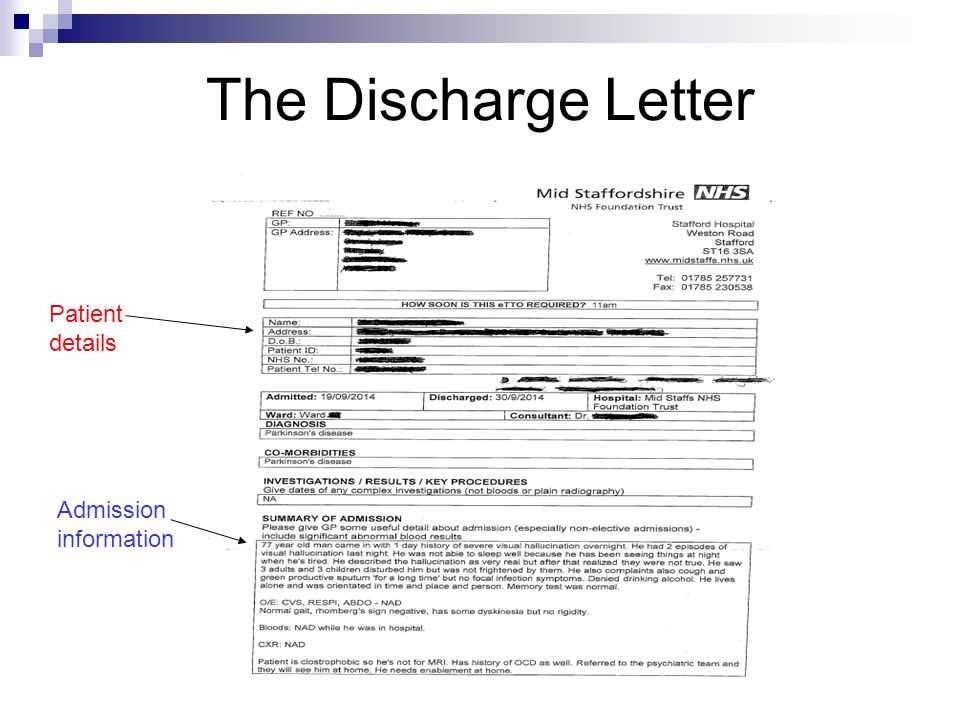
Take prescribed medications exactly as directed. Follow the dosage instructions and frequency to ensure recovery. If you experience any side effects, contact your healthcare provider.
Keep the discharge instructions in a visible place and refer to them regularly to ensure you follow all necessary steps. This will help you manage your recovery more effectively.
Rest as advised. Avoid heavy physical activity until your healthcare provider gives the go-ahead. Light walking may be encouraged, but listen to your body and stop if you feel unwell.
Monitor your wound or surgical site for any signs of infection, such as redness, swelling, or unusual discharge. Contact your doctor if you notice any changes.
| Care Task | Recommendation |
|---|---|
| Medication | Take as prescribed, do not skip doses |
| Activity | Limit strenuous activities, rest as needed |
| Wound Care | Check for signs of infection, keep clean |
| Follow-up | Attend scheduled appointments with your healthcare provider |
Hydrate regularly and maintain a healthy diet to support your healing process. Eating nutritious meals can aid your body’s recovery.
Pay attention to any changes in your condition. If you experience unexpected pain, swelling, or difficulty breathing, seek immediate medical attention.
Contact Information for Follow-up Appointments
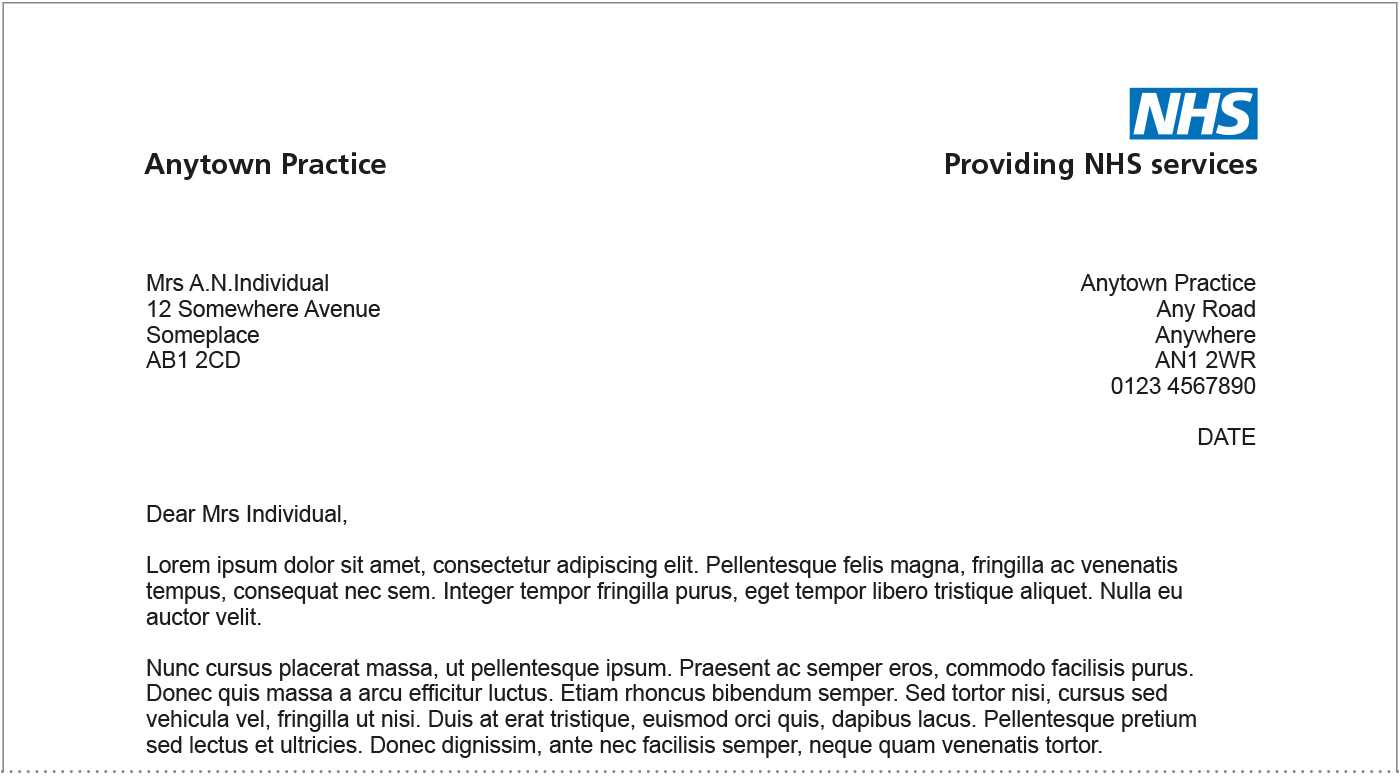
For any follow-up appointments, please contact our booking team directly. You can reach them by phone or email, as provided below. Make sure to have your hospital number ready to expedite the process.
Phone
Call 01234 567890 for any appointment changes or questions. The phone line is available from 9 AM to 5 PM, Monday to Friday.
If you prefer to schedule or reschedule via email, please contact [email protected]. Expect a response within 48 hours. Ensure you include your patient details for quicker assistance.
If you are unable to attend a scheduled follow-up, please inform us at least 24 hours in advance to avoid unnecessary delays and reschedule accordingly.
Legal Considerations and Compliance with NHS Guidelines
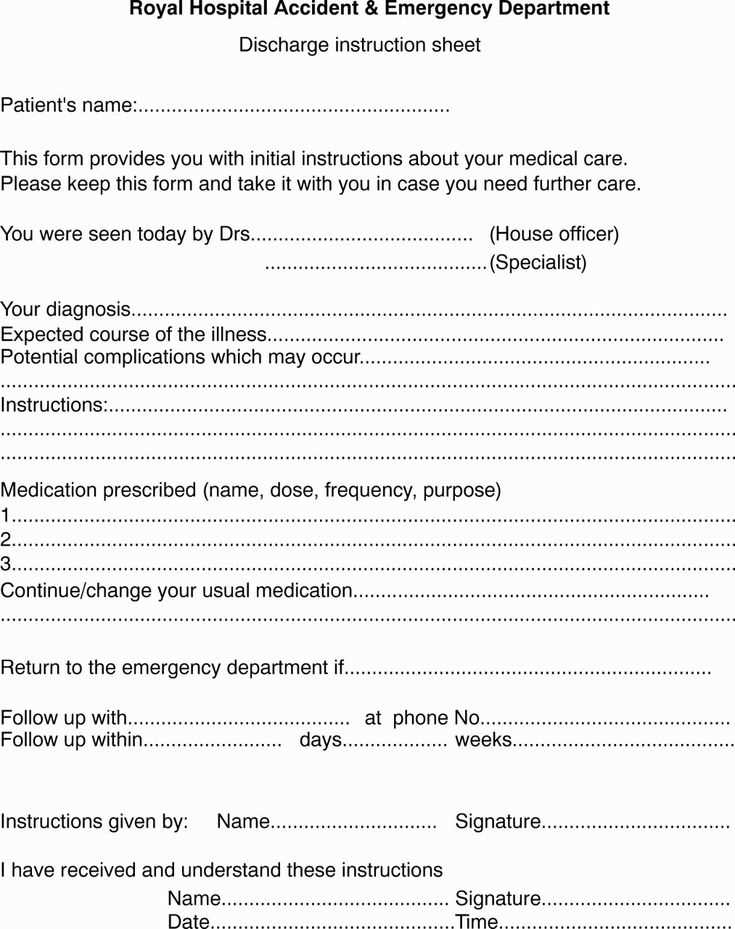
Ensure that the patient discharge letter adheres to the data protection principles outlined by the General Data Protection Regulation (GDPR). This includes maintaining patient confidentiality and ensuring that personal health information is shared only with authorized individuals or organizations. Always obtain explicit consent from the patient before disclosing any details of their treatment or follow-up care.
Follow the NHS guidelines for record keeping. These include clear documentation of the patient’s medical history, treatments provided, and any instructions for future care. Ensure that all necessary clinical information is accurately conveyed to the relevant healthcare providers or services involved in the patient’s post-discharge care.
Be mindful of the patient’s right to access their medical records. Ensure that the discharge letter is provided in a format that is accessible, clear, and understandable for the patient. Avoid using technical medical jargon that could cause confusion.
Adhere to the NHS policy on patient safety. The discharge letter should provide detailed instructions on follow-up appointments, medication, and any potential risks the patient should monitor after discharge. The letter should also include emergency contact information in case of any complications.
Ensure that the discharge letter aligns with clinical best practices and the NHS guidelines for patient care and treatment. Review the letter to confirm that it provides accurate, up-to-date information and is consistent with the patient’s treatment plan and discharge requirements.